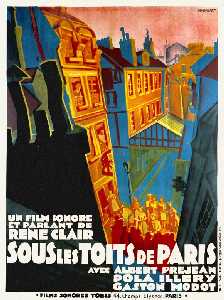A blog formerly known as Bookishness / By Charles Matthews
"Dazzled by so many and such marvelous inventions, the people of Macondo ... became indignant over the living images that the prosperous merchant Bruno Crespi projected in the theater with the lion-head ticket windows, for a character who had died and was buried in one film and for whose misfortune tears had been shed would reappear alive and transformed into an Arab in the next one. The audience, who had paid two cents apiece to share the difficulties of the actors, would not tolerate that outlandish fraud and they broke up the seats. The mayor, at the urging of Bruno Crespi, explained in a proclamation that the cinema was a machine of illusions that did not merit the emotional outbursts of the audience. With that discouraging explanation many ... decided not to return to the movies, considering that they already had too many troubles of their own to weep over the acted-out misfortunes of imaginary beings."--Gabriel García Márquez, One Hundred Years of Solitude
Search This Blog
Saturday, February 25, 2017
Under the Roofs of Paris (René Clair, 1930)
Under the Roofs of Paris, writer-director René Clair's sometimes shaky but often charming bridge between silent films and talkies, begins with cinematographer Georges Périnal's lovely crane shot that slowly descends from the rooftops of Paris -- actually the rooftops of art director Lazare Meerson's elaborate and ingenious set -- to the street where song-plugger Albert (Albert Préjean) is conducting a singalong of "Sous les Toits de Paris," the film's French title song, trying to sell copies of the sheet music. As the camera pans around the crowd, we meet several more characters prominent in the film: the thief Émile (Bill Bocket), who is carefully lifting small valuables from women's purses; the dandyish gangster Fred (Gaston Modot); and a pretty young Romanian woman, Pola (Pola Illéry), who becomes a target for both Émile's thievery and Fred and Albert's attentions. Albert is a success at selling the song, as we see in a vertical pan up the façade of an apartment building, from each window of which comes the sound of someone singing it. This beautiful shot demonstrates how quickly Clair, a reluctant convert, caught on to the innovations possible in sound films. It may have influenced Rouben Mamoulian's brilliant montage in Love Me Tonight (1932), which tracks from Maurice Chevalier singing "Isn't It Romantic?" in his Paris tailor shop as the song spreads across country to Jeanette MacDonald singing it in her château. But Clair also displays some of the uncertainty of silent filmmakers in his dialogue scenes, which have the curious sluggish pace found in early talkies whose directors haven't figured out the rhythm of scenes that aren't interrupted by intertitles. In fact, Clair uses synchronized dialogue sparingly: There are a lot of scenes in which we don't hear what characters are saying, sometimes because the music in the bar where they're talking is too loud, and sometimes because we're viewing them through windows and glass doors. Much of the film uses familiar silent storytelling techniques -- to good effect. The story deals with Albert's ill-fated love for Pola, which develops when Fred steals her house key, making it necessary for her to spend the night (chastely and comically) in Albert's apartment. But then Albert is caught with some of Émile's loot -- the thief has stashed it in Albert's room -- and sent to jail. During his absence, Pola falls for Albert's friend Louis (Edmond T. Gréville), leaving things to be resolved at the film's bittersweet end, when the camera tracks away from Albert plugging a new song back up to the rooftops. The film plays on a characteristic fascination with Parisian lower-class life that includes slumming well-dressed upper-class types dropping in on the dives to see how the other half lives -- a motif that recurs in other French films set in the Paris underworld, like Jacques Becker's Casque d'Or (1952).
